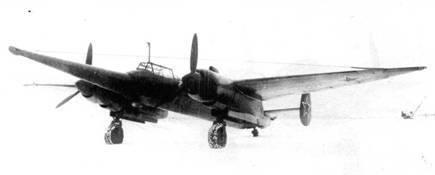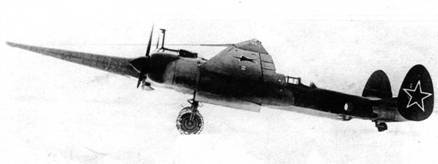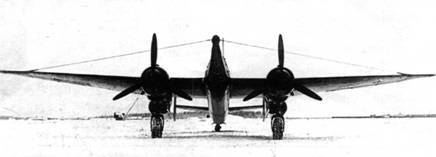Paravan Guardian: Barrier Aerostat Control System

During World War II, among quite a successful means of defense were considered barrage balloons. If the bombers did not die in the collision with the fields of aerostats covering the object, then they went to much greater heights, from which the aimed bombing was difficult. This type of defense is actively used in the Soviet Union and in the United Kingdom. In the midst of the Great Patriotic War, our military didn’t scare them, because the British were allies, but when the war began to end, the question of post-war Europe began to float in the air, the British “Stalin falcons” began to look more closely at British balloons ...
By request of the military Tupolev Design Set "Paravan" device on its planes. Designed system Starkov I.A. In September, 1945 was installed on two serial Tu-2 ASH-82FN devices. The "Paravan" served to protect the aircraft from collisions with barrage balloons and was a six-meter-long cone installed in the forward fuselage, from which 13,5-mm metal cables were pulled to the wingtips. Wing tips increased. On the steel end fairings of the wing were placed special locks with squibs, designed for cutting the cables of balloons in order to avoid accidental impact on the tail fin with a cable. According to other data, the tips on the leading edge had sharp cutting edges. In order to maintain acceptable centering, a weight of 150 kg was placed in the rear fuselage.

In October-November 1948 the Tu-2 ASH-82FN "21 / 57" aircraft passed state tests. During the test, the following results were obtained:
Take-off weight - 10759 kg.
Maximum speed at the height of 5450 m - 537 km / h.
Climb at km 5 - 11 minutes.
Practical ceiling - 9150 m.
At the Air Force Research Institute, the following conclusion was made on the basis of the test data:
“1. Installation on the Tu-2 No. 21 / 57 of the Paravan device on the flight data, piloting technique, controllability and stability of the aircraft has little effect.
2. Tu-2 No.21 / 57 with the Paravan protective device can be allowed to fly after increasing the centering weight of the cargo in the tail section of the aircraft ... "
However, this system was not innovative. Back in 1936 at the training camp of the commanding staff aviation The special purpose task was to find ways to destroy barriers balloons. First Lieutenant Gurov M.D., the commander of the Seventh Cruising Squadron, presented his solution to this problem. The essence of Gurov’s proposal was to install a safety device - a paravan with scissors on the wing consoles for cutting the cables that connected the aerostat to the ground winch.

In the same year, in the workshops of the Rzhev aviation unit, a protective device was urgently equipped with reconnaissance aircraft P-6 (serial number XXUMX). The flight tests of the Air Trawler took place in the summer of 3167 of the year at the Air Force Scientific Research Institute, at the Chkalovskaya airfield (Schelkovsky airfield). In March 1937, after minor modifications, continued the flight tests of the “Air Trawler” P-1938, which showed that the aircraft could successfully cut cables with a diameter up to 6 millimeters. At the same time, the working team for SAT tuning of aircraft has been established. However, tests have shown that the installation Paravan increased drag.
Based on materials:
www.rulit.net
alternathistory.org.ua
www.nnre.ru
Information